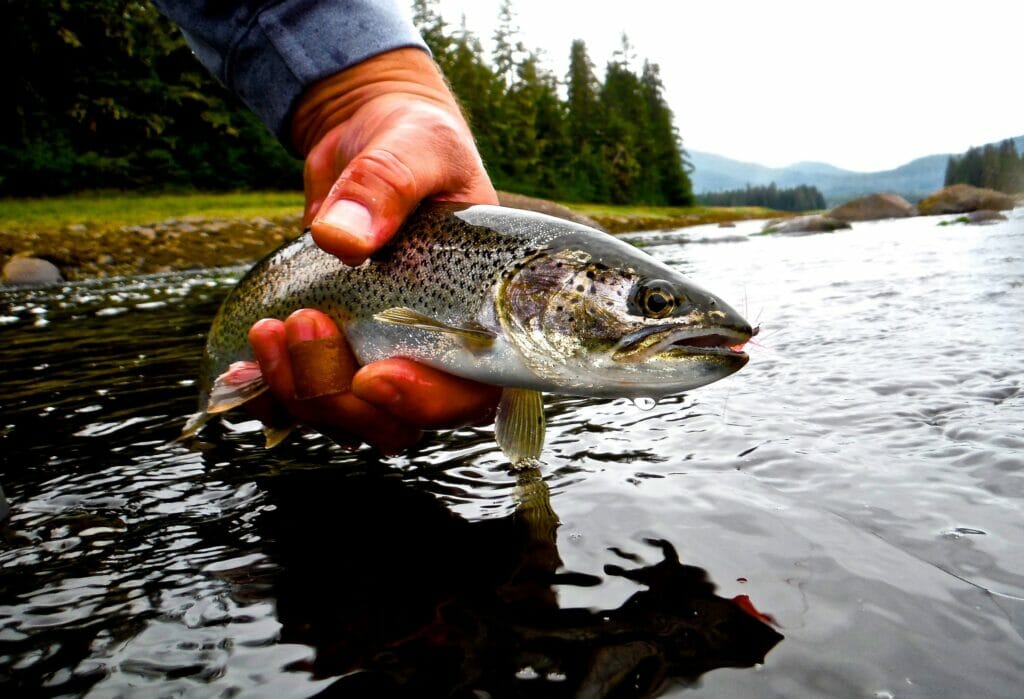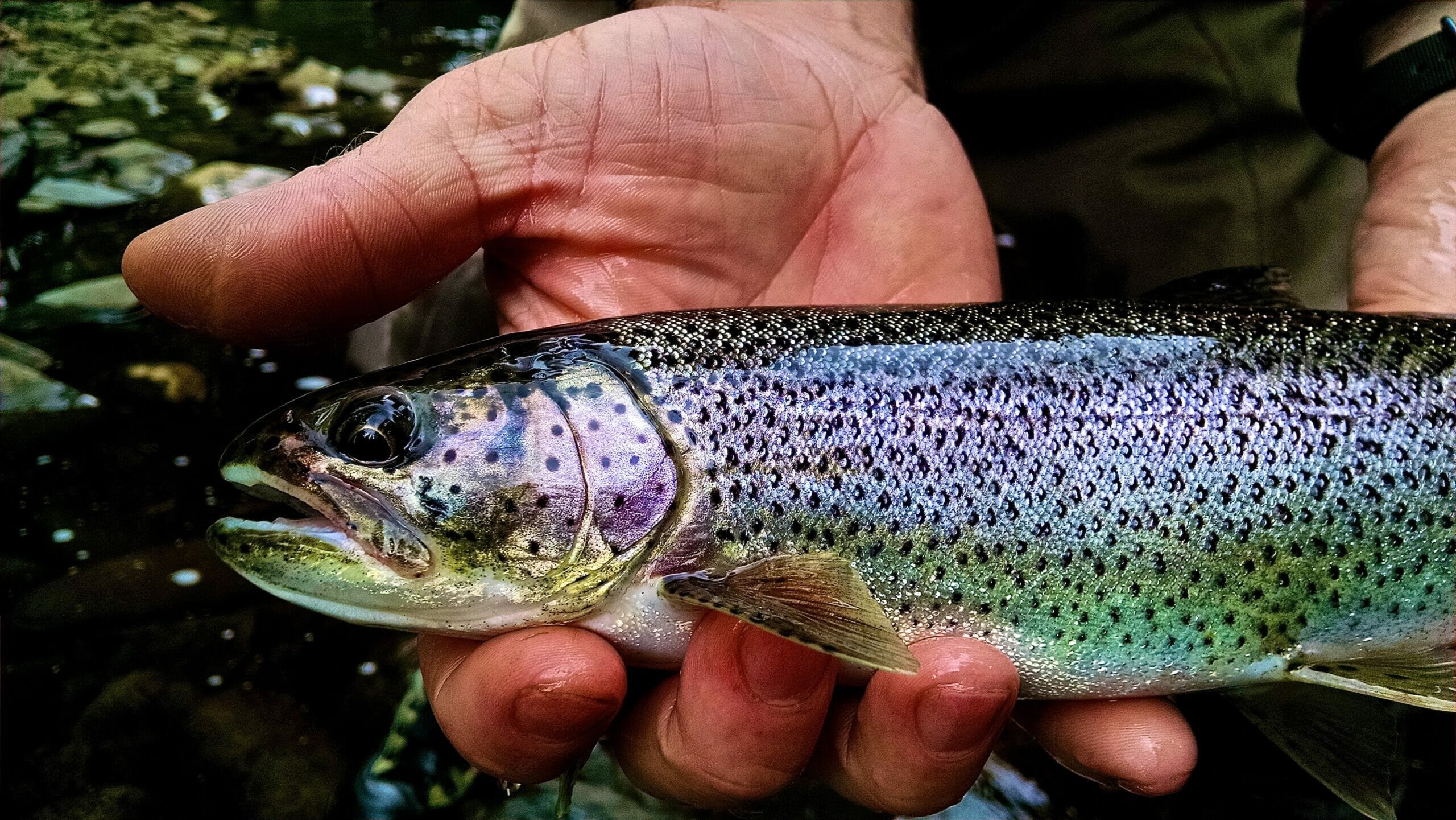Coastal cutthroat trout from a stream near Ketchikan, Alaska. Chris Hunt photo.
By Chris Mayes
The coastal cutthroat trout is a fish of many names: sea-run cutthroat, blue-back, harvest, among others. Regardless of the name, most Pacific Northwest anglers agree the coastal cutthroat is a fantastic gamefish for anglers of all ages. Often the top predator in rivers and streams, the coastal cutthroat’s eagerness to bite and acrobatic displays when hooked all make it a highly sought-after catch.
Coastal cutthroat can be found in most coastal rivers and streams between the Eel River in northern California, north to Seward, Alaska. Although they can thrive entirely in fresh water, cutthroat with access to the Pacific Ocean will often spend their summers feeding along the coast and inside saltwater bays before ascending rivers and streams to spawn in the fall.
Like salmon and steelhead, the coastal cutthroat is anadromous, and this life history is a way for coastal cutthroat to attain larger sizes by feeding on abundant food sources at sea before returning upstream to spawn in fall and winter. Coastal cutthroat trout can reach sizes up to 24 inches and 6 pounds, though most of the coastal cutthroat encountered by anglers are under 18 inches in length.
The arrival of the sea-run fish to coastal bays and tidewaters adds an exciting dimension to the fishery. After spending the spring and early summer months feeding along the coast, sea-run cutthroat typically start showing up in coastal bays and the tidewaters of rivers by early August, with peak migration in early September. These fish average 12 to 18 inches in length, have silvery sides, and an aquamarine-colored back, attributable to their blue-back nickname.

Coastal cutthroat are often ambush predators, lying in wait near sunken trees, overhanging shoreline brush, and rocky shorelines. While waiting in bays and tidewaters for fall rains to raise and cool river levels, sea-run cutthroat remain aggressive, often preying on juvenile salmon and steelhead. Anglers can capitalize on these aggressive habits by using flies and lures that imitate young salmon.
Where, when and the gear you’ll need
Fishing gear for coastal cutthroat, including the sea-run variety, can be fairly simple: most anglers use light-action spinning rods and reels from 6 to 8 feet in length, with lines ranging from a 6- to 8-pound test. A 5-weight fly rod is a good call, with 3x leader and small streamer patterns that imitate baitfish. Your best chances for success are to cast flies and lures as close to sunken trees and brushy shorelines as possible. Be ready for an aggressive strike as soon as the fly or lure hits the water.
The best times to catch coastal cutthroat are mornings and evenings, and on cloudy days with low light conditions. Fishing in waters affected by tides adds another dimension to the fishery, with high tide typically the best time to fish. Time your tidewater fishing with a morning high tide, and you’ll maximize your chance at success.
The best times to catch coastal cutthroat are mornings and evenings, and on cloudy days with low light conditions. Fishing in waters affected by tides adds another dimension to the fishery, with high tide typically the best time to fish. Time your tidewater fishing with a morning high tide, and you’ll maximize your chance at success.
Always check your state’s fishing regulations before venturing onto national forests or grasslands to fish. Anglers on public lands must abide by state fishing and hunting laws. Some jurisdictions permit modest harvest opportunities for fish such as cutthroat trout. If you happen to catch yourself a sea-run cutthroat fresh from the ocean, you are in for a tasty meal.
Practice safe fish handling by keeping the fish in the water as much as possible while you remove the hook and release the fish. If the fish is removed from the water, keep it brief and ensure your hands are wet to protect the fish’s slime coat from damage.
Chasing coastal cutthroat trout is a great way to explore the rivers, streams, and bays of the national forests of the Pacific Northwest.
Chris Mayes is a fisheries biologist with the Siuslaw National Forest in western Oregon. This piece first appeared on the U.S. Forest Service home page.



